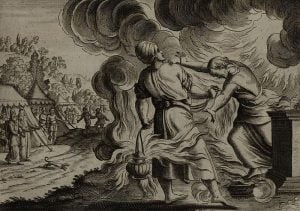Rosh HaShanah: The Beginning of Change II
Abstract This essay explores the profound connections between language, philosophy, physics, and spirituality in the context of Rosh HaShanah. By examining the linguistic roots of
Abstract This essay explores the profound connections between language, philosophy, physics, and spirituality in the context of Rosh HaShanah. By examining the linguistic roots of

The spectacle of the universe becomes so much the grander, so much more beautiful, the worthier of its Author, when one knows that a small

And for the unclean they shall take of the ashes of the burning of the purification from sin, and running water shall be put thereto

This is the fourth installment in the series of essays on the nature of the soul. The first three installments can be found here: What

In the biblical story of the creation of Adam, the Torah states: Then the Eternal G‑d formed man of the dust of the ground, and

And Nadab and Abihu, the sons of Aaron, took each of them his censer, and put fire therein, and laid incense thereon, and offered strange

Strings vibrate, Souls tremble, Angels are running and returning, G‑d is touching and not touching – The rhythms of the universe… Nothing stays still… all

And the Eternal spoke unto Moses, after the death of the two sons of Aaron, when they drew near before the Eternal and died. (Leviticus